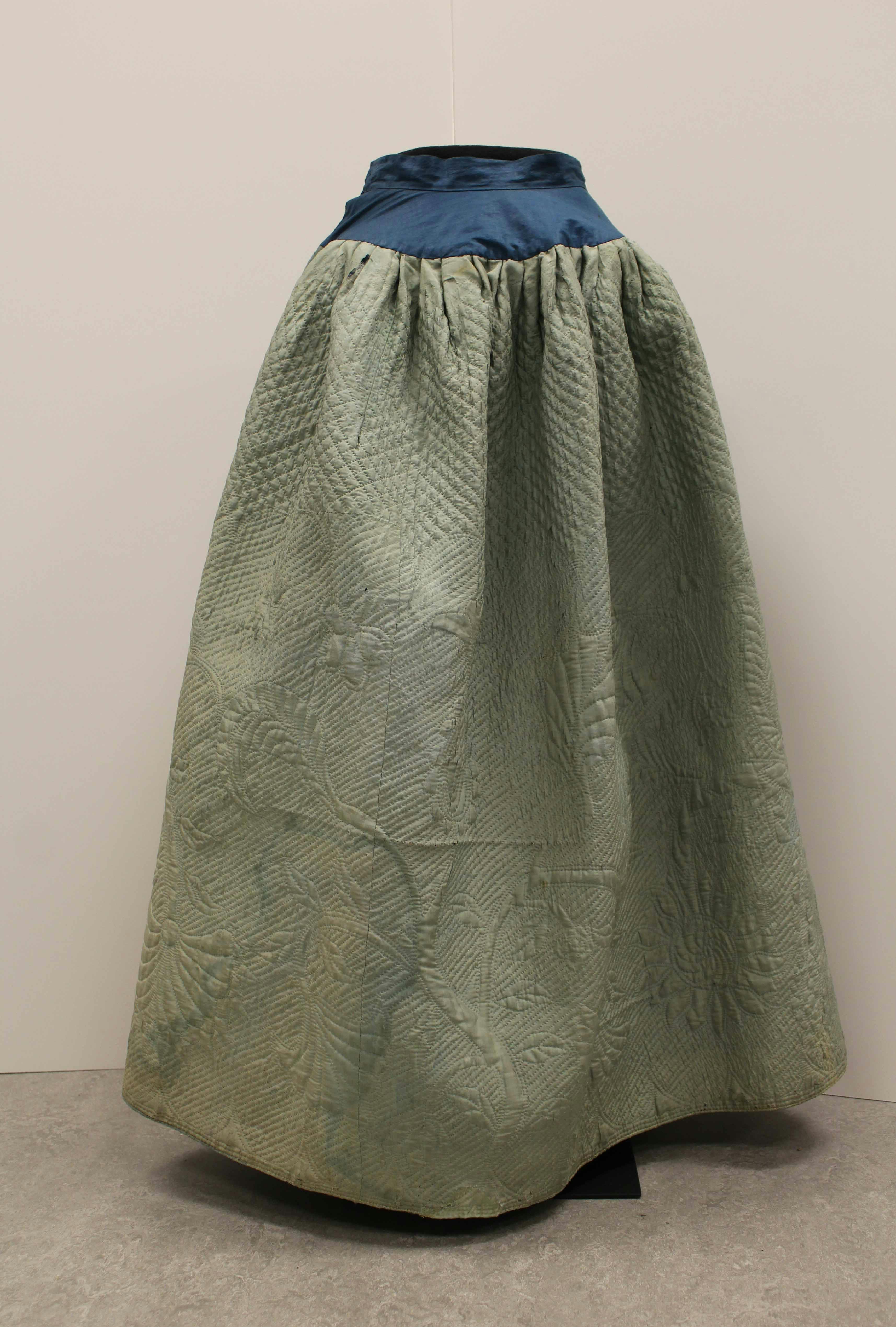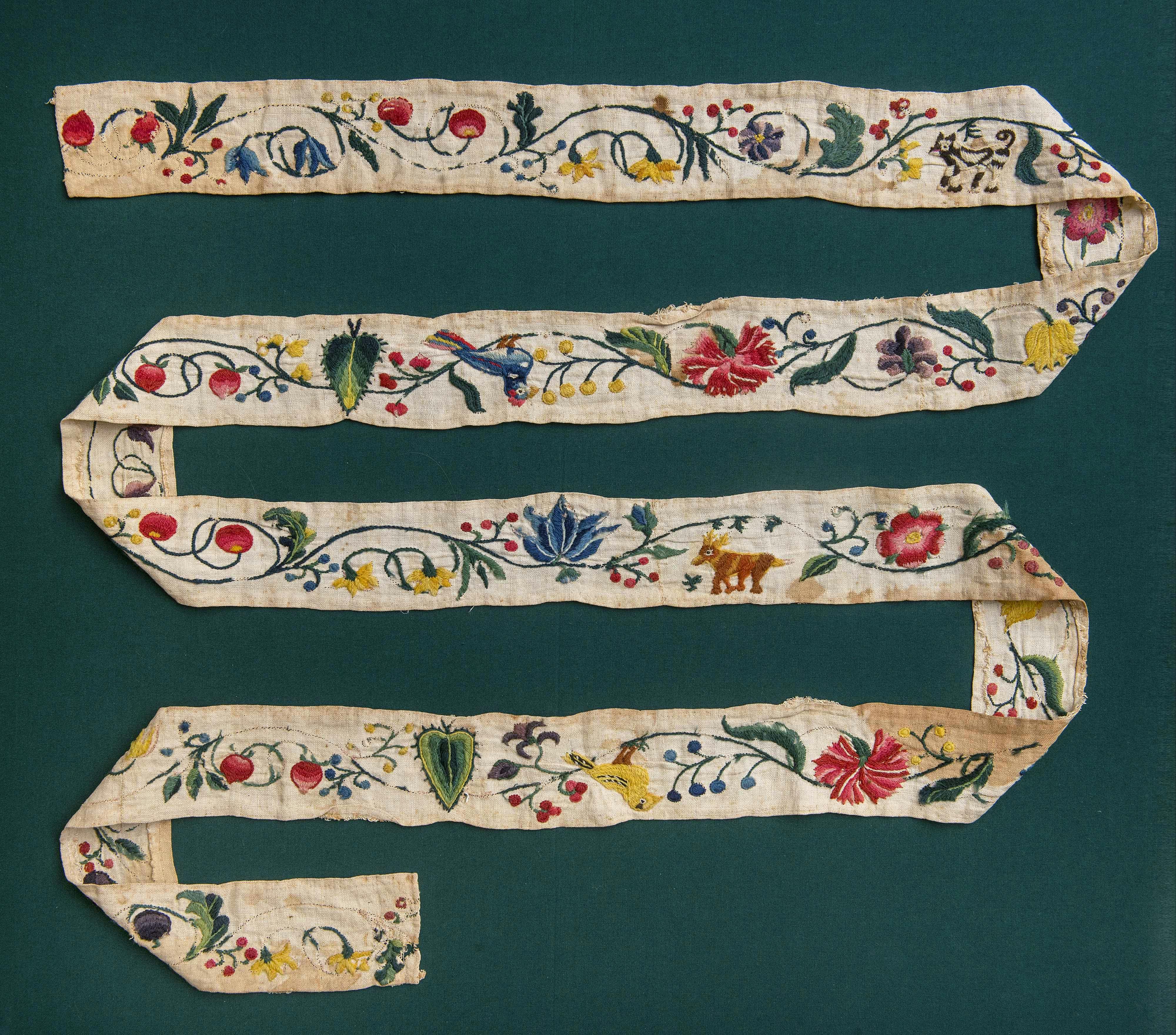

“The Petticoat Electors”
Petticoat
Embroidered Silk
Coverage of women voters was wide and varied. Some papers portrayed women voters as “petticoat electors,” implying they may have been older, or mindless pawns of male candidates. Others described women voters as “Wollstonecraftians,” after British feminist thinker Mary Wollstonecraft, suggesting their radicalism and potential to bring the chaos of Revolutionary Europe to America. These satirical depictions branding women voters “dangerous” stoked fears that women in New Jersey had the ability to tip the scales of partisan power.
A Federalist newspaper from 1804 reported that a Democratic-Republican candidate for governor, Joseph Bloomfield, was “seen rallying the petticoat electors and hurrying them and others to the poll.”
Women often wore petticoats as undergarments in the 1700s. They were typically worn underneath a gown or robe, with the primary function of either keeping a woman warm or helping her achieve the desired shape of a garment. Some open-robed skirts revealed a decorative petticoat worn beneath. This silk petticoat belonged to a New Jersey woman in the Revolutionary era. The petticoat was old fashioned compared to the neoclassical garments that came into vogue in the 1790s.
Museum of the American Revolution
Petticoat Border
Embroidered Plied Wool Crewel Yarn on Linen
Petticoat borders provided women a way to display their embroidery talents on their clothing. Borders were often sewn across the hem of a petticoat to enhance a garment or add creative flair, usually with a floral or foliage design. The intricate design on this border includes images of roses and tulips, a calico cat, birds, vines and berries.
Monmouth County Historical Association